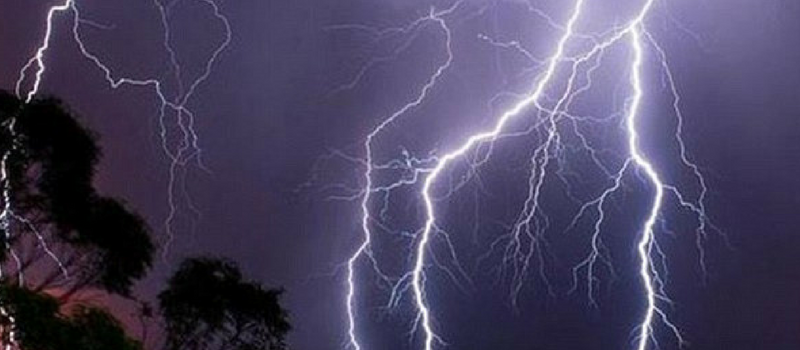
Lightning can contain 100 million to one billion volts. That should be enough to make you wary of running in an electrical storm (or doing any other outdoor activity for that matter).
Here are some of the non lethal effects of being struck by lightning, just in case you need further convincing.
Short term Effects
- Impaired eyesight or blindness
- Ringing in the ears
- Ruptured ear drums
- Hearing loss
- Unconsciousness
- Seizures
- Paralysis
- Burns to the skin
- Burning to internal organs
Long term effects
- Memory problems
- Problems with sleeping
- Headaches
- Irritability
- Fatigue
- Balance problems affecting gait
- Joint stiffness
- Muscles spasms
The three second rule
Count the number of seconds between seeing a flash of lightning and hearing thunder. For every three seconds, the lightning is one kilometre away. And just because you don’t see lightning, don’t assume it’s not around. Apparently, you can’t have thunder without lightning (but you can have lightning without thunder)
What to do if you’re caught outside in a thunderstorm
You should always check the weather forecast and the weather radar before you head out for a run, even if it’s a bright sunny day. If you’re planning a long run, much can change in a couple of hours. If you do get caught out in a storm there are some precautions you can take.
- Seek shelter, not under a tree or other tall pole-like structure. Lightning has a tendency to strike taller structures within reason, and if you’re next to a tree when lightning strikes you can either be injured by the falling tree, or be felled by the electricity conducted through the earth.
- Pop into a shop or a service station until the storm has well and truly passed. A bus stop, porch, verandah or other non-enclosed structure won’t cut it. It’s recommended you wait till half an hour after the last lightning flash before you venture out again. More than half of lightning deaths occur after the storm has passed.
- If you’re close to your car, you can take shelter in it, but be careful to stay away from the sides of the car. Sit in the back seat, or on the floor in the back. Keep the windows and doors closed, and make sure you are not parked under a tree!
- If you can’t get under shelter, crouch over into a ball with your chin tucked in. Have two feet on the ground, as close together as possible. This makes you a single point of contact. Don’t lie on the ground.
- If you’re in a group, stay several metres from each other.
- Keep out of puddles, as water conducts electricity
- Don’t put up an umbrella. And if you have an umbrella with you when you’re running, you have other issues!
Some other points about electrical storms
- Lightning does, and often strikes twice.
- Someone who has been struck by lightning will not contain a residual charge from the lightning, and you can safely perform first aid on them
- If you’re inside, stay away from concrete walls or floors which may have metal bars inside them
- Do not have contact with anything that can conduct electricity (e.g., electrical equipment or cords, plumbing fixtures, corded phones)
Running in wet weather
If you’re sure there is no electrical activity about, there’s no reason you shouldn’t get out and run in the rain. Here are some tips for wet weather running.
References
http://www.lightningsafety.noaa.gov/resources/OSHA_FS-3863_Lightning_Safety_05-2016.pdf
https://www.australiawidefirstaid.com.au/lightning-strikes/
http://www.abc.net.au/news/2016-12-07/how-to-protect-yourself-from-lightning-strikes/8099570


